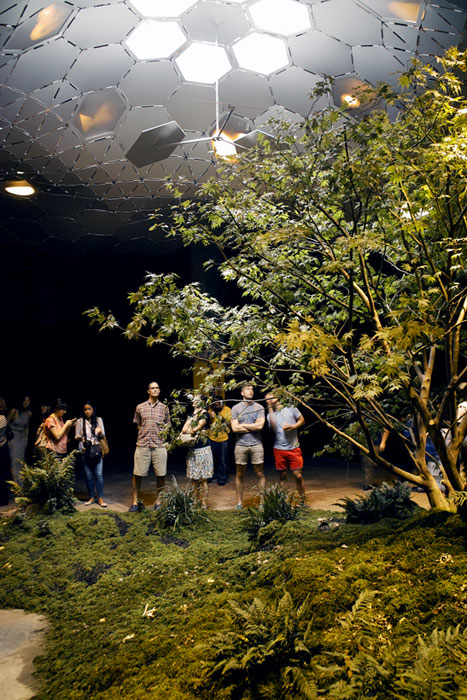The Lowline exhibition
Underneath the street at the foot of the Williamsburg bridge is an abandoned underground trolley storage facility. Until recently, few knew about this hidden space.
From the New York Times:
James Ramsey and Dan Barasch, come to the project with prestigious résumés (Yale and NASA in Mr. Ramsey’s case, Cornell and Google for Mr. Barasch). They want to convert the space into a subterranean park, using fiber-optic technology to channel in natural light — enough light, in fact, to allow photosynthesis to occur and, as a result, for plants to thrive.
The proposal is called the Lowline, named to echo the High Line, the elevated park built on the old rail viaduct slicing through Manhattan’s westside. Ramsey and Barasch and a host of other supporters and collaborators have put together an exhibition in a disused market building adjacent to the trolley site. In it they have built a prototype of the sun collectors and created a mini landscape comprised of a tree, ferns, and moss. I had been somewhat skeptical of the concept until seeing the exhibit–I imagined the lighting being indirect and dim. But the actual impression is of a shaft of sunlight penetrating the darkness. An array of these collectors would produce an underground world brightly illuminated by daylight.
There are a lot of reasons for the Lowline to fail–the fact that the Metropolitan Transit Authority owns the space and wants to maximize the value of this otherwise dead space. The cost of building and maintaining such an elaborate piece of infrastructure. The bureaucratic red tape inherent in any New York City project, no matter how straight forward–and this would be anything but straight forward.
On the other hand, more than 10,000 people have passed through the Low Line exhibition in two weekends, an extraordinary number. The project has clearly seized the imagination of the city and beyond.
While visiting the exhibit yesterday I met briefly with Margaret Chin, Lower East Side city councilwoman, who is supporting the project, and then spoke with Dan Barasch. He was familiar with my book Time and Space on the Lower East Side, and I suggested that there might be a way I could support their project through my photography. I would love to be involved in some way.
